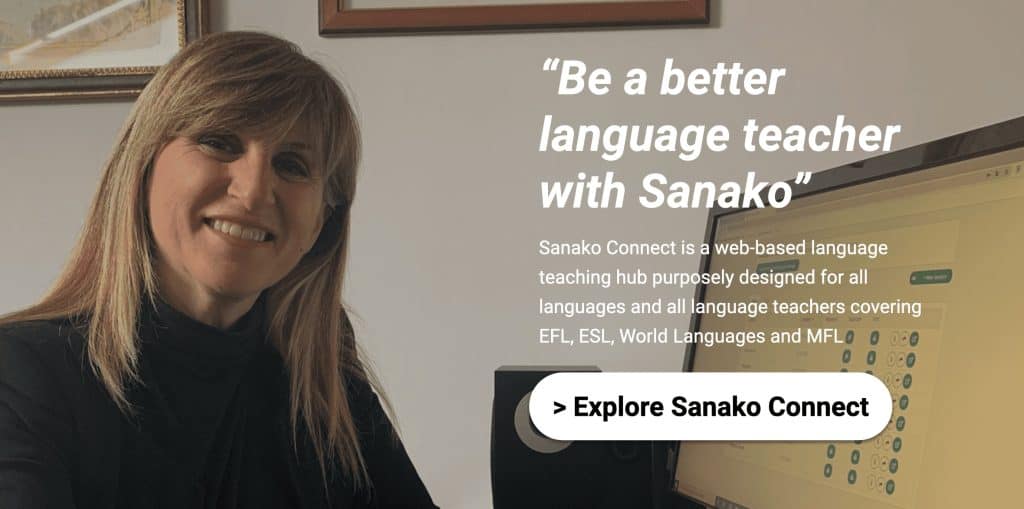As language educators work out the best way to respond to the challenges and opportunities of ChatGPT and other advanced technologies, some teaching tools continue to stand the test of time. One such solution is the dictionary, which continues to hold significant value in language learning and which has recently undergone its own digital transformation.
This blog post aims to shed light on the evolution of dictionaries as language teaching resources and highlights the vital role they still continue to play in contemporary language instruction. It will also explore some highly practical and contemporary ways in which language educators can easily integrate them into their teaching practice.
Using dictionaries in language teaching
We’re all familiar with using a dictionary to look up the meaning of words that we don’t know or understand. But there are other useful ways in which students can use dictionaries when learning new languages.
This includes checking the right form of a word; finding out how to use a word in a sentence; exploring when it’s appropriate to use a particular word or not; and to check if other words might be better used instead. Dictionaries also play a role in enhancing learners’ spelling and pronunciation skills. The inclusion of phonetic transcriptions, audio pronunciations, and syllable breakdowns aids learners in accurately reproducing words. By consulting dictionaries, learners can ensure the correctness of their pronunciation, fostering effective communication in both spoken and written contexts.
Learner’s dictionaries
For the purposes of this article, we’ll focus on the use of learner’s dictionaries, which have been specifically designed for language students. These products are highly accessible and include simple definitions that are easy for lower ability users to understand. They also feature additional information that helps learners to use words accurately and in appropriate context.
Importantly, there is a wide range of these dictionaries available which cater for different learner needs. This includes picture dictionaries for younger users, bilingual dictionaries between students’ L1 and L2 and tailored dictionaries for students in school and university settings. Given this range and choice, it’s important to give students a clear guide / indication of which products to buy or use. For this, publishers’ websites can be excellent places to start.
Digital dictionaries
Although best known in their printed format, there are an increasing variety of digital / online dictionary solutions now available. These include:
- Aggregator sites, such as Dictionary.com, which give access to data licensed from various reference publishers.
- Paid-for digital dictionaries that are available to users via an online subscription (e.g. Oxford English Dictionary)
- Free dictionaries from leading publishers which tend to be supported by advertising (e.g. Collins Online Dictionary)
- Dictionaries made freely available by government or non-commercial providers such as Den Danske Ordbog.
Dictionaries of all types are also available as apps for smartphones and for tablet computers. These cater well to the needs of translators and language learners as they are constantly updated, helping users keep up-to-date with new vocabulary and language usage.
Why are dictionaries such a key tool for language learning?
Dictionaries are such enduring language teaching tools because of the value they add to teachers and students. From our review of case studies and other relevant literature, we’ve identified five key ways in which they can really support learners.
1. Enhancing vocabulary acquisition
Dictionaries are excellent at enabling learners to explore new words, expand their vocabulary and better understand their meanings and usage. By actively engaging with a dictionary, learners can also develop important skills such as word recognition, understanding word forms and expanding their knowledge of synonyms, antonyms and collocations.
2. Encouraging independent learning
Language educators are always looking for ways to foster autonomy and independent learning skills in their students. Dictionaries serve as powerful tools in this regard. By using dictionaries, learners can work on their own to explore unfamiliar words, grasp their definitions and identify appropriate usage. This also empowers students to engage with language outside the classroom, bolstering their confidence and self-reliance.
3. Developing core language skills
Dictionaries can also contribute to learners’ core language skills. In reading, learners can use them to decipher the meaning of unknown words, enabling comprehension of texts. When it comes to writing, dictionaries aid in selecting appropriate vocabulary, avoiding repetition, and ensuring accuracy. In listening and speaking, dictionaries provide learners with the necessary linguistic resources to express themselves accurately and confidently.
4. Cultivating critical thinking
Dictionaries help develop critical thinking skills by encouraging learners to carefully analyse and evaluate language. When they encounter multiple definitions or example sentences using a word, students are prompted to select the most appropriate one based on context. This cultivates critical thinking, problem-solving abilities and helps learners grasp the nuances of language usage. Additionally, dictionaries provide insights into word origins and etymology promoting a deeper understanding of the language.
5. Expanding cultural competence
It is important to remember that language learning goes beyond linguistic competence and importantly also involves cultural understanding. Dictionaries often provide cultural information, idiomatic expressions and contextual usage of words, enabling learners to appreciate the cultural nuances embedded within language. By using dictionaries as a gateway to cultural insights, educators can help enrich students’ understanding and appreciation of diverse cultures.
5 practical tips for incorporating dictionaries in language teaching
Having identified the benefits that dictionaries can bring to the language teaching classroom, it’s also important to consider how educators can easily incorporate them into their daily practice. We’ve highlighted the following five tips for you to consider.
1. Teach dictionary skills
It’s important to begin by teaching students how to use a dictionary (on or offline) effectively. This includes understanding entry structure, pronunciation guides, part of speech indications and contextual usage examples. Encourage students to also explore word families, synonyms and antonyms for a comprehensive understanding of vocabulary.
2. Classroom dictionary activities
Try to regularly incorporate engaging dictionary activities in everyday classroom lessons. For instance, challenge students to find definitions of unfamiliar words and to then use them in sentences; play vocabulary games that involve dictionary use, or assign projects where students create their own mini-dictionaries.
3. Independent study
Take time to promote dictionary use outside of regular lessons by setting homework tasks that prioritise finding information in a dictionary. Ask them, for example, to note down any words that they needed to look up and to explain the process used and choices made.
Such tasks help students to take control of their own learning in a guided and supported fashion. This helps build and develop their confidence for future dictionary-based tasks and further independent learning projects.
4. Integrated skills practice
Help students to become familiar with using a dictionary by incorporating their use into various language skills exercises. For example, when looking at reading skills, have students look up unfamiliar words, infer meaning from context, and discuss their findings. In writing, encourage learners to use dictionaries to improve word choice and expand vocabulary. In speaking and listening activities, incorporate dictionary activities such as word association games or role-plays that involve the use of newly acquired words.
5. Online technologies
The online versions of leading learner’s dictionaries also offer a wide range of additional functionality that support learners to build skills in their L2. The online version of the Oxford Advanced Learner’s Dictionary, for example, enables students to create lists of the words they need / want to learn and to then test themselves. Its iSpeaker feature also helps learners to develop their pronunciation / speaking skills and there’s a wide range of lesson plans and resources for educators to use in lessons.
Similarly, the Cambridge Dictionary +Plus app helps users to turn word lists into interactive quizzes. Different options are available including word memory games, flashcards and audio questions, where students listen to the word being said and then type out the word.
These digital innovations and updates clearly demonstrate how dictionaries remain indispensable tools for today’s language educators. Adding personalisation and collaboration elements make them highly relevant for modern teaching practices. So let’s embrace the potential of dictionaries to empower our students on their language learning journey.
Whatever language you teach and wherever you deliver your language lessons, Sanako’s market-leading tools are here to help. We’re constantly innovating and looking to use technology to enable language educators to teach languages more efficiently and more successfully. It’s why the world’s leading educational institutions choose Sanako as their preferred supplier to support online and in-person lesson delivery.
If you are interested in learning more about how Sanako products support language teachers and students and would like to see how they could benefit your institution, click here or the banner below to learn more!

